Back to: PHYSICAL HEALTH EDUCATION JSS 2
Welcome to Class !!
We are eager to have you join us !!
In today’s Physical Health Education class, We will be discussing Field Events. We hope you enjoy the class!
FIELD EVENTS
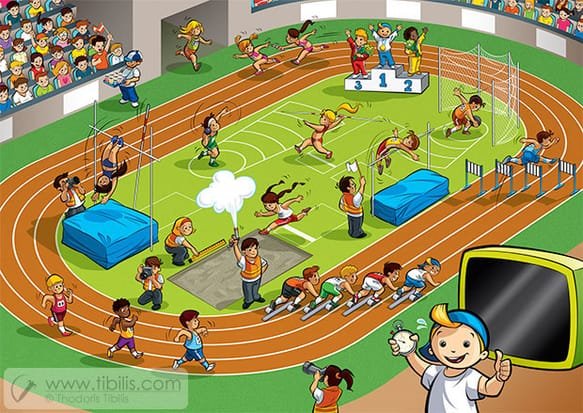
Track and field events have a long and rich tradition and are some of the oldest athletic contests in recorded human history. In 776 BC, at the first Olympic Games in Ancient Greece, there was only one sport – wrestling.
Gradually, the Games expanded to include the javelin throw, the long jump and others. By 200 BC, these athletic contests were so popular, there were 4 separate festivals, with participants from neighbouring countries and cities, like Rome (The Panhellenic Games).
The field events come in two types – jumping and throwing competitions. In throwing events, athletes are measured by how far they hurl an implement, with the common events being the shot put, discus, javelin, and hammer throw.
There are four common jumping events: the long jump and triple jump are contests measuring the horizontal distance an athlete can jump, while the high jump and pole vault are decided on the height achieved.
Throwing Events
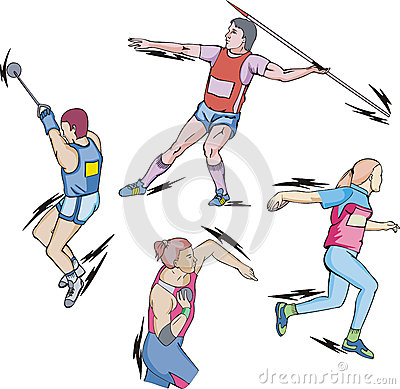
It’s always fun to see who can throw something the furthest, whether it’s a ball, a Frisbee, or even a rock. Track and field is the place where you can throw stuff for distance as a real sport. There are four major throwing events outlined below.
1. Discus:
In the discus event, the athlete throws a round disc, typically made of plastic with a metal rim. The men’s college and Olympic discus weighs 2 kg and the women’s college and Olympic discus weighs 1 kg.
The discus is thrown from a concrete circle that is about 2.4m in diameter. The athlete’s feet can’t leave the circle before the discus lands or the athlete will fault, and the throw won’t count.
The athlete will spin around to gain momentum and speed and then release the discus in the proper direction. The athlete that throws it furthest from the front part of the circle (and within the legal area) wins.

2. Javelin:
The javelin is something like a spear. This event should be supervised at all levels to be sure no one is hurt.
The men’s college and Olympic javelin weighs 800 grams and is about 2.5m long. The women’s college and Olympic javelin weighs 600 grams (21 ounces) and is about 2.1m long.
The javelin must be thrown a specific way for it to be a legal throw. With the javelin an athlete has to:
- Hold the javelin by its grip and nowhere else
- Throw the javelin overhand, over your shoulder or upper arm.
- They cannot turn their back to the target when throwing (this means they can’t spin)
When throwing the javelin, the athlete jogs down a runway to gain momentum and then must throw the javelin prior to crossing a line. The runway must be a standard size, 4m wide and 30m long. It must end in a curved arc, from which the throw will be measured.
The athlete cannot go over the line until the javelin lands which means the athlete needs to leave some extra space to slow down and have really good balance at the end of the throw. The athlete that throws it furthest (and within the legal area) wins.

3. Shot Put:
In the shot put event, athletes throw a metal ball. The men’s college and Olympic shot weigh 7.26kg. The women’s college and Olympic shot weigh 4 kg.
This sport actually started with a cannonball throwing competition in the Middle Ages. The shot is thrown from a concrete circle that is 7 feet in diameter. The front of the circle has a metal board called a toe board. The athlete cannot touch the top of the toe board or step over it during the throw. The athlete holds the shot close to his/her neck in one hand.
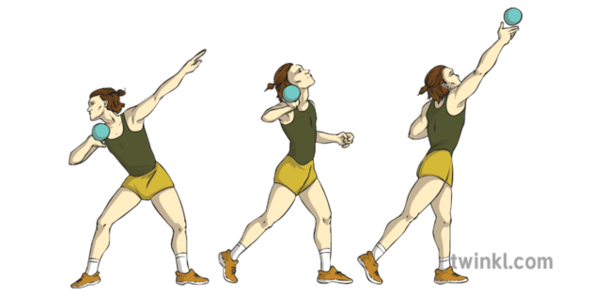
There are two common throwing techniques: The first has the athlete slide or “glide” from the back to the front of the circle before releasing the shot. The second has the athlete spin in the circle (like the discus) before releasing the shot.
With either technique, the goal is to build momentum and finally push or “put” the shot in the direction of the legal landing area. The athlete must stay in a circle until the shot has landed. The athlete that throws it furthest from the front part of the circle (and within the legal area) wins.
4. Hammer Throw:
The hammer throw doesn’t actually involve throwing a hammer like you would think. In this track and field throwing event, the athlete throws a metal ball attached to a handle and a straight wire about 3 feet long.
The men’s college and Olympic hammer weigh 7.26kg. The women’s college and Olympic hammer weigh 4kg. The hammer is thrown from a concrete circle 7 feet in diameter (just like the shot put) but there is no toe board.
Like the discus and the shot put, the athlete must stay in a circle until the hammer lands. The athlete spins several times to gain momentum prior to releasing and throwing the hammer. Balance is important due to the force generated by having the heavy ball at the end of the wire. The athlete that throws it furthest from the front part of the circle (and within the legal area) wins.
Jumping Events
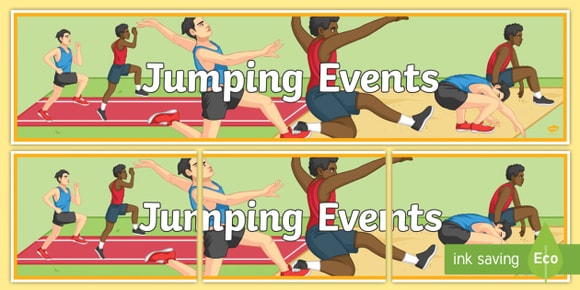
Like running races, jumping competitions seems to be part of our DNA from the time we are kids. We like to see how high and far we can jump and who can do it best. There are four main track and field jumping events. Here is a description of each:
1. High Jump:
In the high jump event, the athlete gets a running start and must jump over a bar without knocking it over. They land on a big soft cushion. Like many track and field events, there is a key element to doing well in this sport, which in this case is being able to jump high, but the technique is very important as well. Timing and leaving your feet at the right point as well as how you bend your body as you go over the bar are all important.
There have been many techniques used for high jumping over the years, but the current, and most successful, is called the Fosbury Flop.
The Fosbury Flop technique involves leading with your head over the bar (vs. leading with your feet) and twisting such that your back is to the ground and closest the bar as you go over it. Jumpers then land on their back.
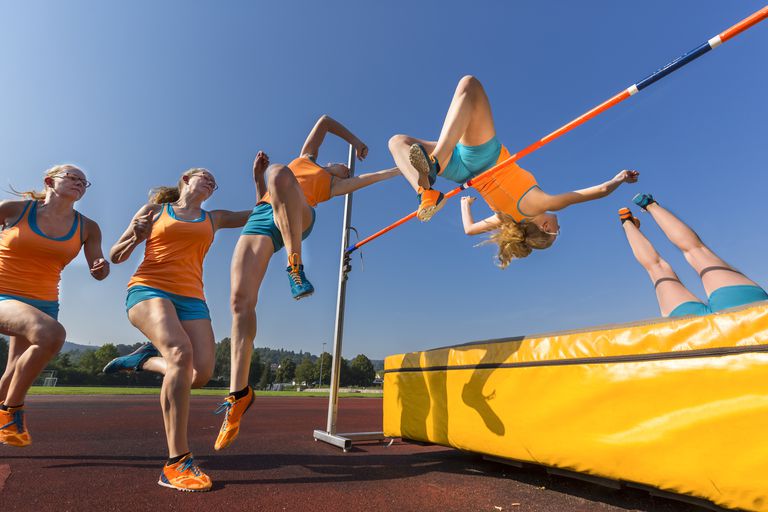
2. Long Jump:
The long jump involves more skill and technique than just being able to jump. First, the athlete must have good speed as they sprint down the runway to prepare for the jump; next, they must have very good footwork at the end of their run so they can launch as close to the line as possible without going over the line and faulting; third they must make a good jump, and lastly, they must have a proper form through the air and into the landing. All of these techniques and skills must be executed to perfection to pull off a good long jump.

3. Pole Vault:
While all of the field events take require a technique to excel, the pole vault may be the toughest to master. In this track and field event, the athlete runs down the track holding a pole at one end.
At the end of the run, the plant the far in of the pole into a metal box in the ground and then propel themselves up and over a 4.5m horizontal bar using both a jump and the spring of the pole to gain height. They must get over the bar without knocking it off. They then land on a large soft mattress for safety.
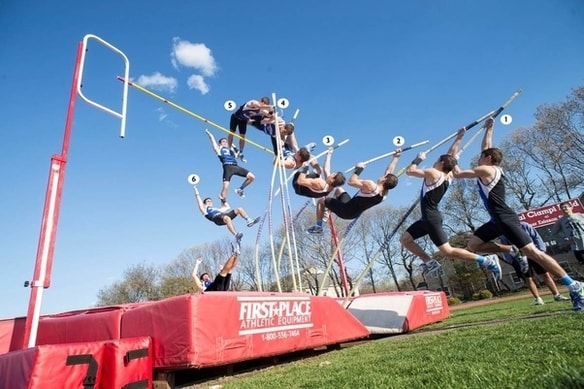
4. Triple Jump:
The triple jump is similar to the long jump, but there are three combined jumps that go into the total length. These are called the hop, the step, and the jump. The athlete will first run down the track gaining speed; at the start of the jump or take-off point they will jump from one foot and land on that same foot (hop); they then jump again, this time landing on the opposite foot (step); next, they jump as far as they can and land on both feet (jump).
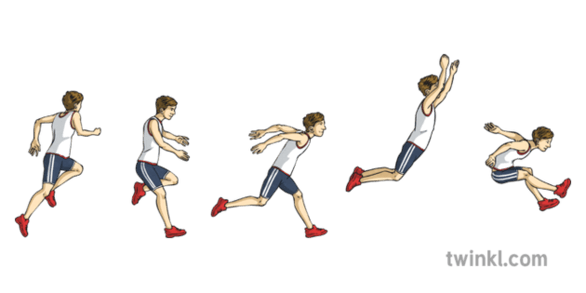
We have come to the end of this class. We do hope you enjoyed the class?
Should you have any further question, feel free to ask in the comment section below and trust us to respond as soon as possible.
In our next class, we will be talking about Judo. We are very much eager to meet you there.
